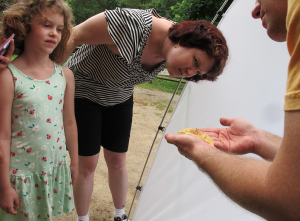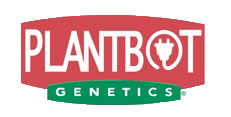Beneficial Pollinators
Knowing that honeybees, bumble bees, moths, birds, and small
mammals that pollinate over 90% of the planet’s flowering plants and one
third of human food crops — How can you help?
Birds, Bees, Flowers and Trees
About 90% of all flowering plants need the help of animals to move
pollen from flower to flower for the production of fruits and seeds.
Most pollinators, about 200,000 species, are beneficial insects such as
bees, flies, beetles, wasps, ants, butterflies, and moths. About 1,000
species of pollinators are vertebrates like birds, bats, lizards, and small
mammals.
Native plants should be your first choice to help our native bees.
Listed below are some plants that are good sources of nectar and pollen
for bees. This list is not exhaustive; there are many other plants good for
bees. Individual species have not been included. Not all of these genera
will have species in your local area, but they do represent plants that will
grow in a variety of environments. Use a wildflower guide or contact local
nurseries to find your local species.
In addition, many plants that you buy at large stores contain Neonicotinoid
Pesticides that are absorbed into plant tissues and are present in pollen and
nectar, making them toxic to bees and and other pollinators. Currently,
treated plants are unlabled yet HomeDepot will start labeling their plants
this Fall. To assist pollinators, look for plants that are labeled to be free of
Neonicotinoid pesticides or buy organic seeds and grow them yourself.
A neighbor or relative with a heritage garden may also be a great source to
share plants that are healthy to bees.
Native St. Louis Area Plants:
Common Name Scientific Name
Aster Aster
Beebalm Monarda
Blazing star Liatris
Cup plant Silphium
Wild indigo Baptisia
Fireweed Chamerion
Goldenrod Solidago
Giant hyssop Agastache
Ironweed Vernonia
Joe Pye weed Eupatorium
Leadplant Amorpha
Lobelia Lobelia
Lupine Lupinus
Milkweed Asclepias
New Jersey tea Ceanothus
Obedient plant Physostegia
Penstemon Penstemon
Prairie clover Dalea
Purple coneflower Echinacea
Rattlesnake master Eryngium
Spiderwort Tradescantia
Steeplebush Spiraea
Sunflower Helianthus
Willow Salix
Choose the Right Flowers
To help bees and other pollinator insects—like butterflies—you should provide a range of plants that will offer a succession of flowers that provide pollen and nectar through the whole growing season. Patches of foraging habitat can be created in many different locations, from backyards and school grounds to golf courses and city parks. Even a small area planted with the right flowers will be beneficial for each patch will add to the mosaic of habitat available to bees, moths, and other pollinators.
In such a short fact sheet it is not possible to give detailed lists of suitable plants for all areas of the Upper Midwest. Below are two lists of good bee plants, the first of native plants and the second of garden plants. Both are short lists; there are many more bee-friendly plants. However, these lists, combined with the following notes, will get you started on se- lecting good bee plants. Your local chapters of the Wild Ones, the Native Plant Society and native plant nurseries are worthwhile contacts for advice on choosing, obtaining, and caring for local plant species.
• Use local native plants. Research suggests native plants are four times more attractive to native bees than exotic flowers. In gardens, heirloom varieties of herbs and perennials can also provide good foraging.
• Choose several colors of flowers. Flower colors that particularly attract native bees are blue, purple, violet, white, and yellow.
• Plant flowers in clumps. Flowers clustered into clumps of one species will attract more pollinators than individual plants scattered through the habitat patch. Where space allows, make the clumps four feet or more in diameter.
• Include flowers of different shapes. Bees are all different sizes, have different tongue lengths, and will feed on different shaped flowers. Consequently, providing a range of flower shapes means more bees can benefit.
• Have a diversity of plants flowering all season. By having several plant species flowering at once, and a sequence of plants flowering through spring, summer, and fall, you can support a range of bee species that fly at different times of the season.
• Use organic plants or buy flowers that are labelled to be free of pesticide posion.
Resources on Bees and Bee Gardening
Are Neonicotinoid Pesticides Killing Bees?
http://www.xerces.org/neonicotinoids-and-bees/
http://www.xerces.org/wings-magazine/neonicotinoids-in-your-garden/
Upper Midwest Plants for Bees
http://www.stlzoo.org/files/9613/3296/0636/uppermidwest-plants-for-bees-xerces.pdf
South Central Plants for Native Bees and Pollinators
http://www.xerces.org/wp-content/uploads/2010/01/southcentral-plants-for-bees-xerces6.pdf
General Plants for Bees
http://www.xerces.org/wp-content/uploads/2008/11/general_bee_plants_fact_sheet_xerces_society.pdf
Native Bees for Agriculture
http://www.xerces.org/wp-content/uploads/2008/10/factsheet_value_of_native_bees_for_agriculture.pdf
Three Steps to Help Bees and Butterflies
http://www.xerces.org/wp-content/uploads/2010/11/pollinator-three-steps_fact_sheet2.pdf
Build your own nests for Native Bees
http://www.xerces.org/wp-content/uploads/2008/11/nests_for_native_bees_fact_sheet_xerces_society.pdf
PlantBot Genetics created the Moth Project to underscore bee decline and
the importance of pollinators in our environment. Public events,
exhibitions, educational outreach, field guides, mothing parties and
dinners provide direct experiential activities that encourage backyard
naturalism and citizen science.
See more at http://www.monsantra.com/#!moths/c1qbm

